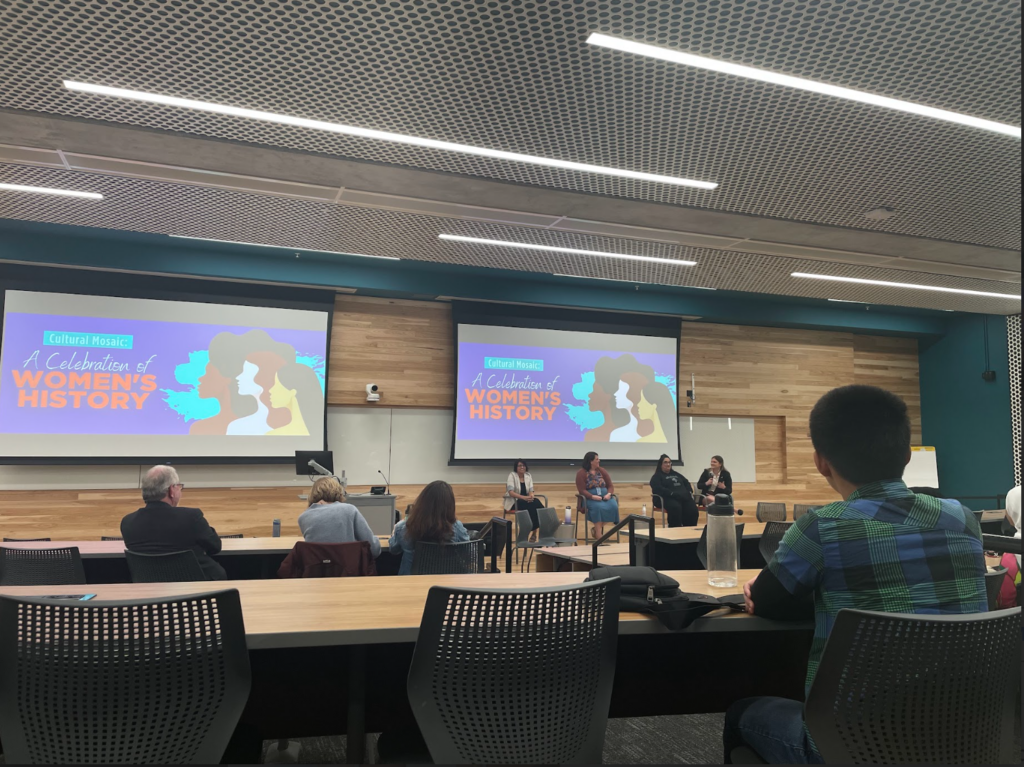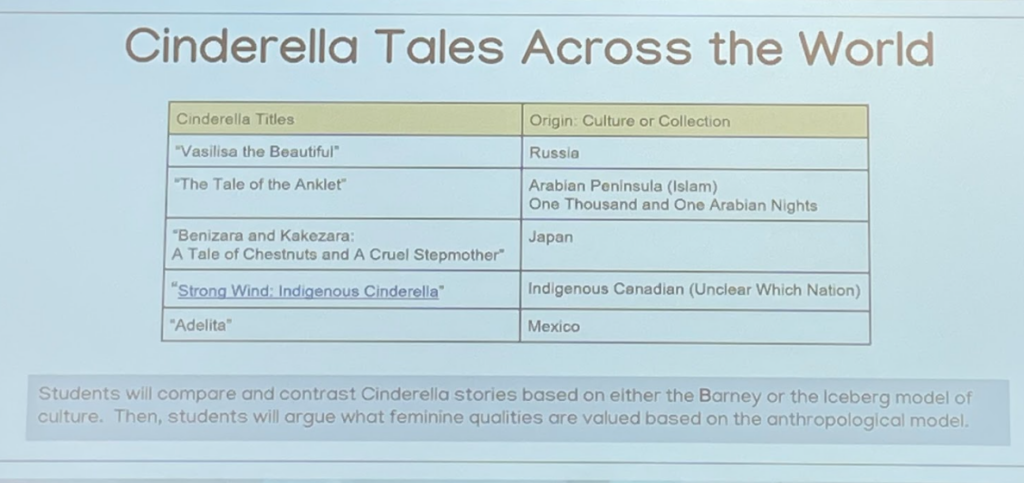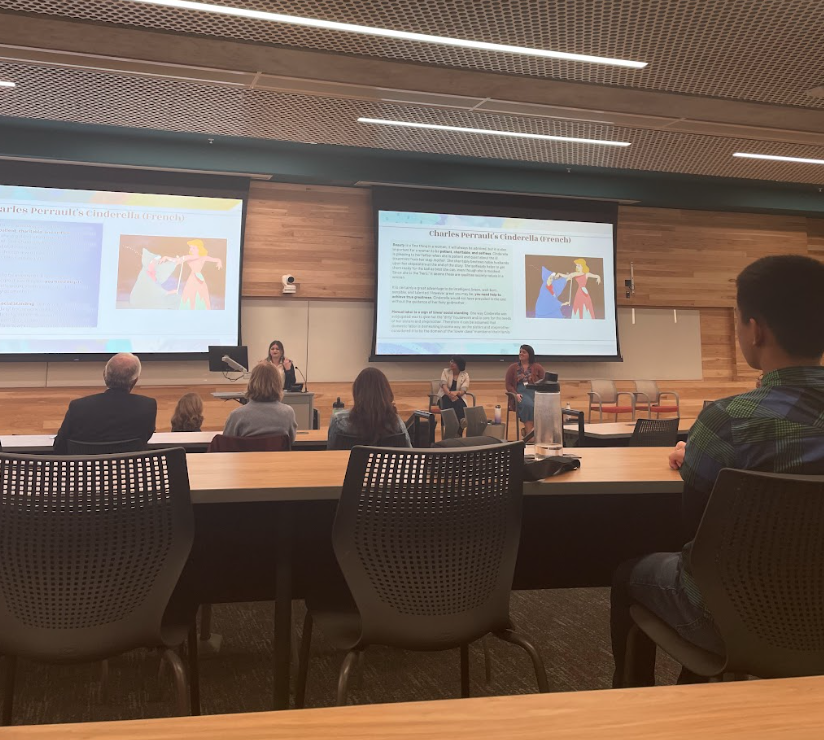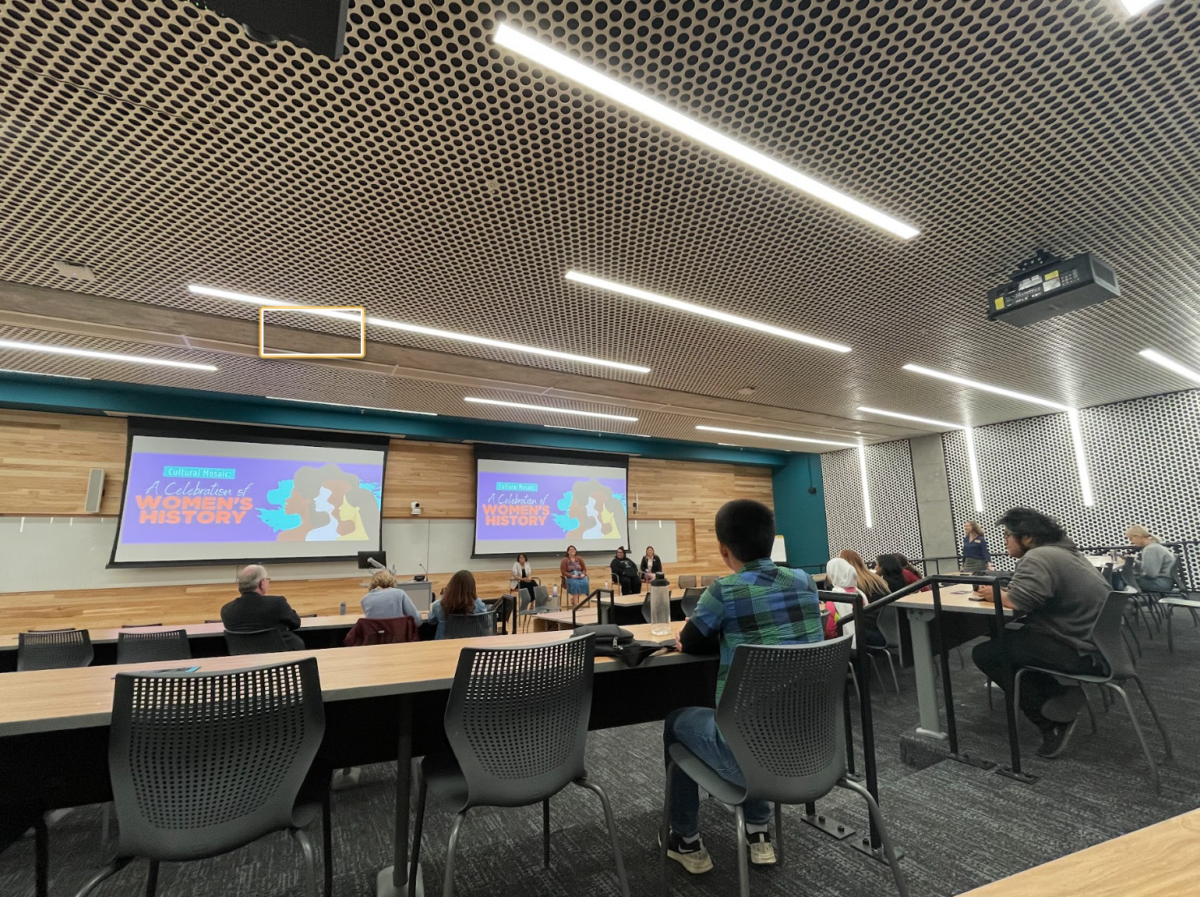Story by Ava Vano
Studying Disruptors and Trailblazers
The panel began with Dr. Brenda Roy and her four students speaking about what they have learned in the Women and Gender Studies English Composition II classroom. Roy spoke about the class’s attitudes towards gender and through what perspective she sought to approach that, and explained that the course is designed on“[Using] gender as the primary, but not the only lens to explore course texts.”
In the class, students read a variety of short stories, poetry, essays and watched TED talks exploring women’s stories. Why does this matter? Roy’s goal is to “Center students’ own lived experiences” and to create “embodied citizens outside the classroom,” according to her presentation.

Each of the four students got the opportunity to present their own topics pertaining to the course that they were passionate about. Attendees saw presentations about gender socialization, personal impacts of one’s own gender, thoughts about “The Yellow Wallpaper” by Charlotte Perkins Gilman, and an analysis of “Girl” by Jamaica Kincaid. These students explored what it means to be a woman personally, but also what literature has taught us about womanhood.
Monstrous Women Around the World
The next presentation was “Monstrous Women Around the World” given by Professor Alex Watkins. Watkins spoke about themes of monsters as cultural ideals and how monsters are a way to villainize and disempower certain groups, referencing Jeffrey Cohen’s “Monster Culture (Seven Theses)”.

A keynote from this presentation was the fourth thesis, “The Monster Dwells at the Gates of Difference,” in which she reflects upon “the other” and our fear of that idea. This is applicable to many different groups of people and is something that is ever present within our media. Overall, through this presentation, the attendees were given the opportunity to reflect upon what people have the tendency to fear and why exactly they do that.
Indigenous Women in Politics
The third presentation was “Indigenous Women in Politics” by Professor Vanessa Faz. She began the presentation by pointing out the issue of indigenous women going missing every day, and the lack of funding and police presence on reservations that has made this issue go under the radar in many instances.
On a brighter note, the main point of her presentation was to celebrate the indigenous women that were able to break through the political sphere and were elected into government positions. For example, Deb Haaland was the first Native American woman elected into Congress and to hold a cabinet position, and Sharice Davids followed Haaland to be the second Native woman in Congress.
Faz points out that there were no Native Americans elected into Congress from 1902 to 2018, making the barriers these women broke down even more impressive.
Global Cinderella Stories: How Fairy Tales Reflect the Feminine Ideal
The final presentation was “Cinderella Stories and the Feminine Ideal – How Stories Shape Our Perception” given by Professor Lauren Elander who is a dual credit high school teacher from Round Rock ISD.
Elander has the unique challenge of teaching high school students and finding texts that all students can see themselves in, expressing that challenge by asking “How am I going to find a text for everybody?” Elander gives students the option to write about texts and material not in the curriculum if they feel drawn to it, giving students the opportunity to find texts they are passionate about.

Elander presented Cinderella stories across all different cultures and what expectations from women are shown through their depiction. Intersectionality is a key concept for the interpretation of texts within Elander’s classroom, and as her students navigate their course material, they are given the opportunity to reflect upon themselves and others.
Although Women’s History Month has come to an end, we can still find the time to reflect upon women’s stories and the challenges they face through literature. This panel gave several women the opportunity to share their stories and empower other women through the recognition, acknowledgement, and exploration of topics that may otherwise be overlooked.


